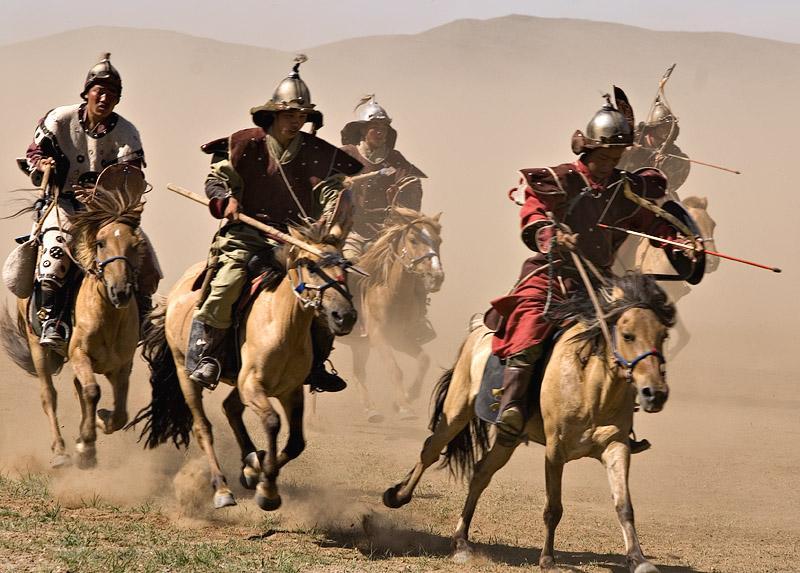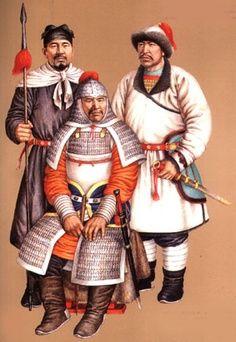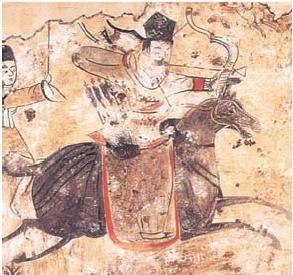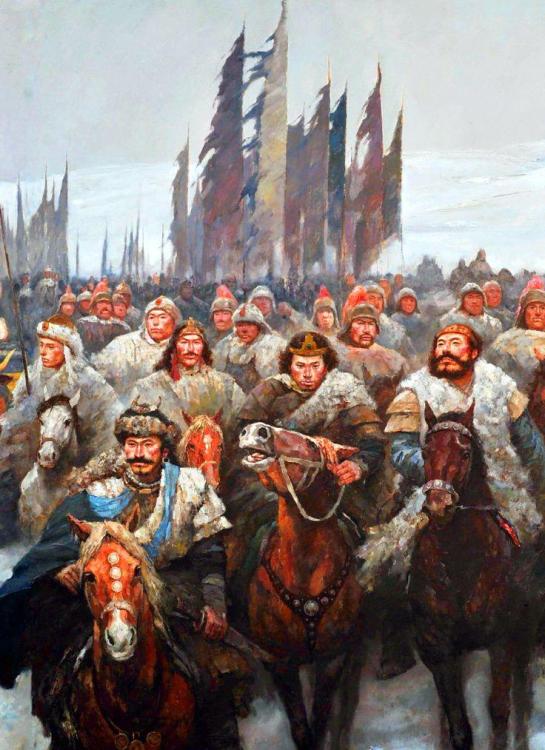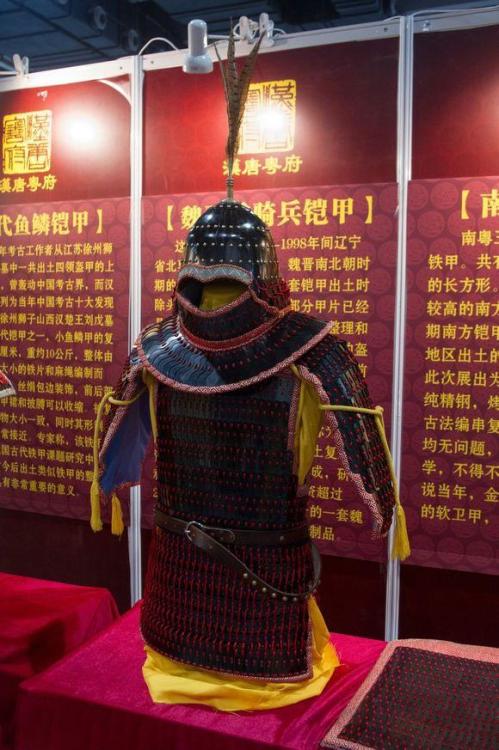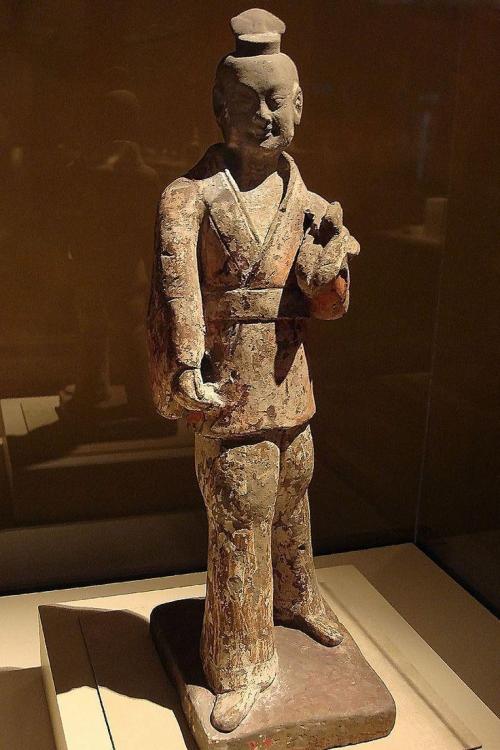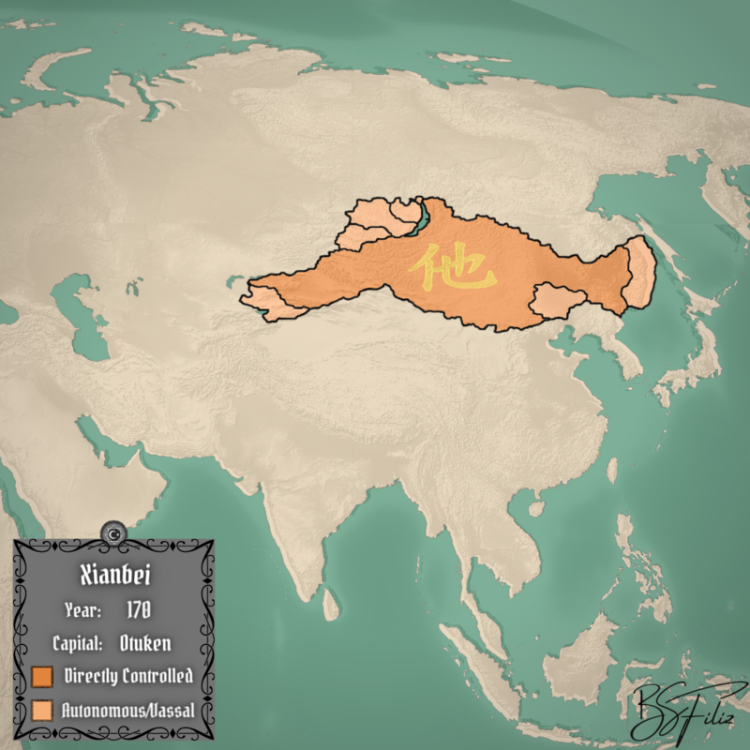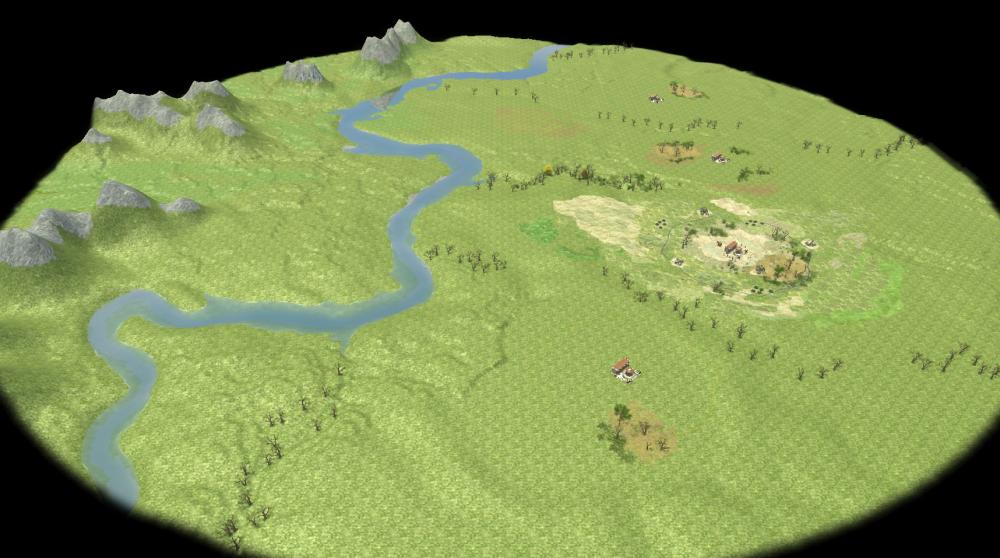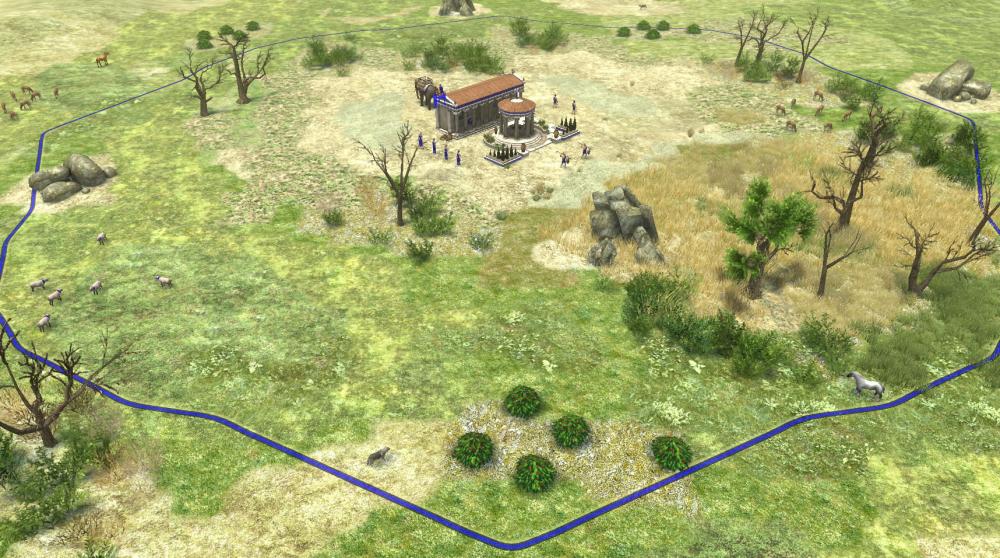Search the Community
Showing results for tags 'nomads'.
-
as part of the cultures associated with the wars with the Han dynasty, the Xianbei was one that was more successful than the Xiongnu. Even they were able to attack Wa (Japan). The Xianbei (Proto-Mongol) rulers of the Northern Wei had a very distinct culture and art-style that greatly influenced northern China's aesthetics for the next few centuries. Scenes of great hunts with stylized fauna and tri-colored mountain was frequently seen in the tombs of Northern Wei's aristocrats. The most famous iconography was the 九色鹿 Nine Colored Deer, which came from a Buddhist parable. THE XIANBEI OF THE VAST STEPPES Buyao 步摇 ("step shaker" lit. step sway ) headdress worn by Xianbei women. Like the ancient Scythians, noble Xianbei women wore ornate gold or gilt bronze jewels in the shape of trees or antlers that formed trees on their head. The gilded leaves are crafted separately and would shake whenever the women moved~ hence the name of step shaker. Both the reindeer sound and deer are seen as auspicious by steppe cultures. The Xianbei state or Xianbei confederation was a nomadic empire which existed in modern-day Mongolia, Inner Mongolia, northern Xinjiang, Northeast China, Gansu, Buryatia, Zabaykalsky Krai, Irkutsk Oblast, Tuva, Altai Republic and eastern Kazakhstan from 156 to 234. Like most ancient peoples known through Chinese historiography, the ethnic makeup of the Xianbei is unclear. When the Donghu "Eastern Barbarians" were defeated by Modu Chanyu around 208 BC, the Donghu splintered into the Xianbei and Wuhuan. According to the Book of the Later Han, “the language and culture of the Xianbei are the same as the Wuhuan”. The first significant contact the Xianbei had with the Han dynasty was in 41 and 45 when they joined the Wuhuan and Xiongnu in raiding Han territory. In 49, the governor Ji Tong convinced the Xianbei chieftain Pianhe to turn on the Xiongnu with rewards for each Xiongnu head they collected.[4] In 54, Yuchouben and Mantou of the Xianbei paid tribute to Emperor Guangwu of Han.[5] In 58, Pianhe attacked and killed Xinzhiben, a Wuhuan leader causing trouble in Yuyang Commandery.[6] In 85, the Xianbei secured an alliance with the Dingling and Southern Xiongnu.[4] In 87, the Xianbei attacked the Xiongnu chanyu Youliu and killed him. They stripped the skin off of him and his followers and took the skin back with them as trophies. Confederation After the downfall of the Xiongnu, the Xianbei replaced them with a loose confederacy from AD 93.[2] Qizhijian became the first great war-leader of the Xianbei in 121. From 121 until his death in 133, the Xianbei made regular raids on Han territory.[8] In 145, the Xianbei raided Dai Commandery.[9] Around 155, the northern Xiongnu were "crushed and subjugated" by the Xianbei. The Xianbei chief, known by the Chinese as Tanshihuai, then advanced upon and defeated the Wusun of the Ili region by 166. Under Tanshihuai, the Xianbei extended their territory from the Ussuri to the Caspian Sea. He divided the Xianbei empire into three sections, each ruled by twenty clans. Tanshihuai then formed an alliance with the southern Xiongnu to attack Shaanxi and Gansu. China successfully repulsed their attacks in 158. In 177 AD, Xia Yu, Tian Yan and the Tute Chanyu led a force of 30,000 against the Xianbei. They were defeated and returned with only a quarter of their original forces.[10] A memorial made that year records that the Xianbei had taken all the lands previously held by the Xiongnu and their warriors numbered 100,000. Han deserters who sought refuge in their lands served as their advisers and refined metals as well as wrought iron came into their possession. Their weapons were sharper and their horses faster than those of the Xiongnu. Another memorial submitted in 185 states that the Xianbei were making raids on Han settlements nearly every year.[11] The Xianbei might have also attacked Wa (Japan) with some success. The loose Xianbei confederacy lacked the organization of the Xiongnu but was highly aggressive until the death of their khan Tanshihuai in 182.[16] Tanshihuai's son Helian lacked his father's abilities and was killed in a raid on Beidi in 186.[17] Helian's brother Kuitou succeeded him, but when Helian's son Qianman came of age, he challenged his uncle to succession, destroying the last vestiges of unity among the Xianbei. Qianman was unsuccessful and disappeared soon after. By 190, the Xianbei had split into three groups with Kuitou ruling in Inner Mongolia, Kebineng in northern Shanxi, and Suli and Mijia in northern Liaodong. In 205, Kuitou's brothers Budugen and Fuluohan succeeded him. After Cao Cao defeated the Wuhuan at the Battle of White Wolf Mountain in 207, Budugen and Fuluohan paid tribute to him. In 218, Fuluohan met with the Wuhuan chieftain Nengchendi to form an alliance, but Nengchendi double crossed him and called in another Xianbei khan, Kebineng, who killed Fuluohan.[18] Budugen went to the court of Cao Wei in 224 to ask for assistance against Kebineng, but he eventually betrayed them and allied with Kebineng in 233. Kebineng killed Budugen soon afterwards. https://en.m.wikipedia.org/wiki/Xianbei_state A Xianbei (Proto- Mongol) Warrior in a riding cloak. Many Xianbei warriors were depicted with their elaborate cloaks. A row of Xianbei cavalrymen wearing their scarlet riding cloaks over heavy armor. These elaborate cloaks would not only have extended sleeves but also pockets. https://dragonsarmory.blogspot.com/2018/09/kingdom-of-norther-wei-1-dark-age.html?m=1 Replica iron lamellar armour of the Xianbei people during the Sixteen Kingdoms period of China (304 AD - 439 AD). The armour is displayed without the cuisses/thigh guard. This replica is made by 蕭何. A warrior in Xianbei-style costume, Northern Qi. The opening of the upper garment is zuoren.Gary Todd from Xinzheng, China - Northern Qi Pottery WarriorIn Xianbei-style costume. National Museum: China through the Ages, Exhibit 5
- 18 replies
-
- nomads
- barbarians
-
(and 2 more)
Tagged with:
-
I was wonder if anyone had any ideas of how to make Steppe biome maps intersting? Trying to make Scythia map. I look at Steppe photographs and it look like there is just grass and small hills and that's it. So, I think terrain blending may be the key to making it look interesting. Also, perhaps only having 1 part of the map be "steppe" and the other part of the map being mountainous or hilly or must have a river or gully (like the Syria map). Flowering plants also seem to be a lot present. We will need more models for flowering plants in the game to make the map interesting. Also, large groups of flowers for nice ground cover. It would also be funn to have tumbleweed, aka Russian Thistle tumbling around. Above you see a map example, where the right side, 60% is the steppes rolling hills and flat grasslands, but to make it more interesting the West 40% has a shallow river and mountains. I am think of putting most of the wood on the West with the mountains. Farmland would go near the river. Trees on the East(right) mostly follow shallow gullies and streams or around watering holes. Patches of shrubs and bushes with a couple of dead trees can be the rest of the wood on the Steppe section of map. I think the key for gameplay of Steppe maps will be a feature that is not yet implemented: herding. On steppe maps, the Corral will become one of the most useful buildings for player. These 2 things are made for each other. On Steppe maps, we can design parameters for resource (something the team should do anyway for all biome, but I am focus on Steppe npw), major resource be herding animals: Goats, Sheep, Cattle, Horses, Camels. And then of course hunting resource: Saiga Antelope (aka Saiga tatarica), European Bison, Corsac Fox, Wild Asses, and others. Wolves should be a major nuisance. And there could be major caches of treasures, treasure troves. So, scouting is very very important on Steppes map, mainly to grab herd animals, steal herd animals, and finding treasures. On team match, trading absolutely necessary. Something like this for resource distribution: 20,000 Wood each player (this is low, I think for a map). Over half of wood is in low-yield shrubs and bushes. Other half in trees. Only 5,000 wood found in or near player start position. 5,000 Berries or fruit trees each player (2-3,000 in or near starting positions). This is high. 8,000 Food huntables each player, 1000 inside start area (for instance, 10 deer x 100 food each), 2000 just outside start area, rest scattere around map, usually near water. 8,000 food herdables each player. Distributed in herds around the map. 1 herd inside start areas. Must go in search of the rest. Metal and Stone are pretty much distribute even across map. 5000 metal and 5000 stone in player start position. 5000 metal and 5000 stone just outside territory (easy to find), then the rest scattered around map evenly. 2 Mercenary Camps per player, one just outside start position, and 1 much farther away, maybe near a water source like a rocky stream or watering hole. Farmlands only near water source like stream or river, away from start position of players. Farming should be difficult.. Falcons and Vultures would be nice. "Hawk" currently in the game is huge, the size of a Golden Eagle. Should be rename to Golden Eagle. A closeup of potential start area. You see most of wood is shrubs and bushes. They are low-yield at only 50 wood per bush. You see the herd of herdables inside start base. You see herds of 10+ huntables nearby. You see a lot of berry bushes, but they are not all clump together in one berry orgy. Stone and metal are spread out, not tucked next to the Civic Center. There are wolves at the periphery. Wolves should be a constant danger to solitary units wandering nearby.

.thumb.png.ce58cea22940c255f5b0a735d5abee36.png)
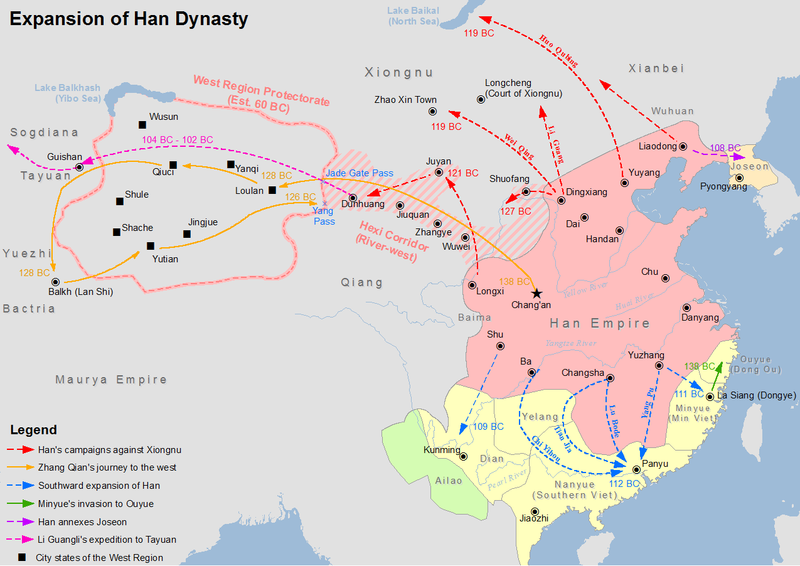
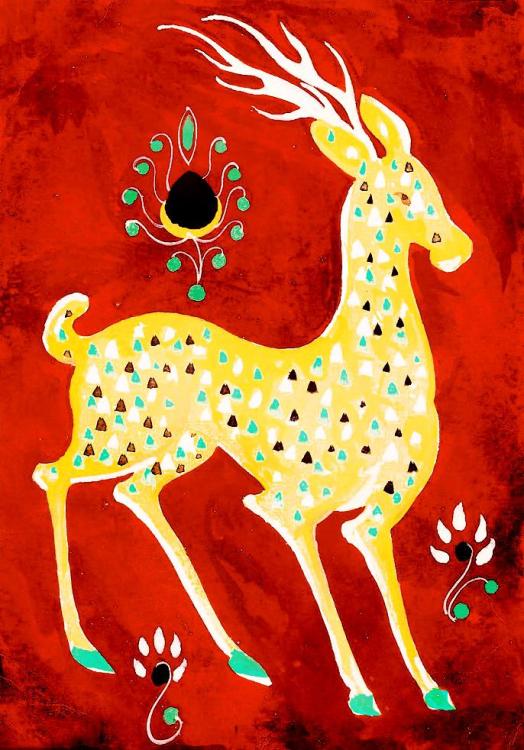
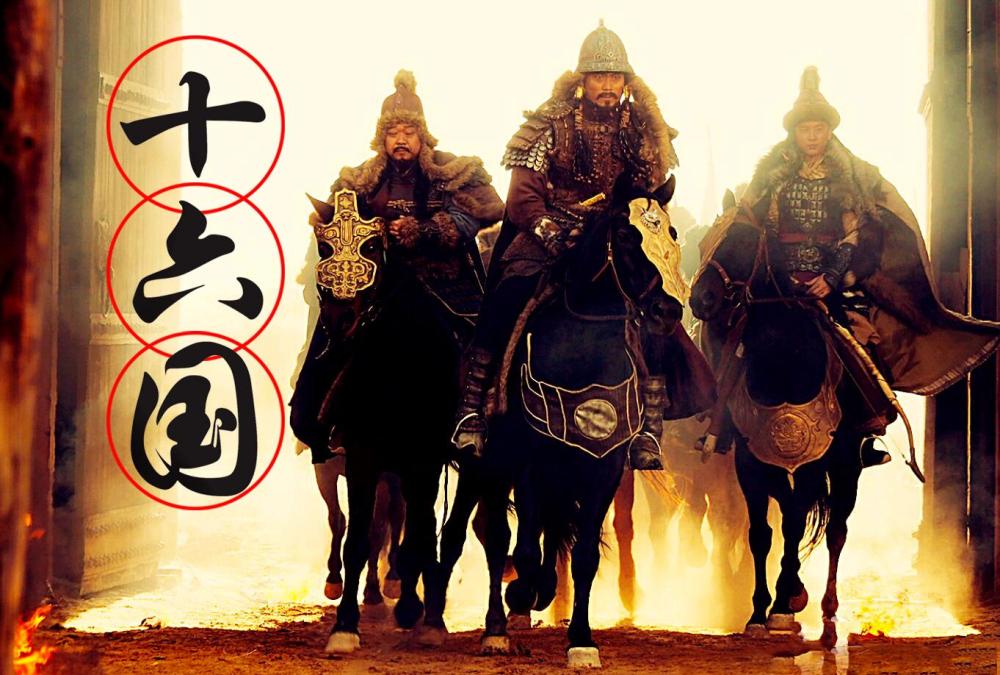
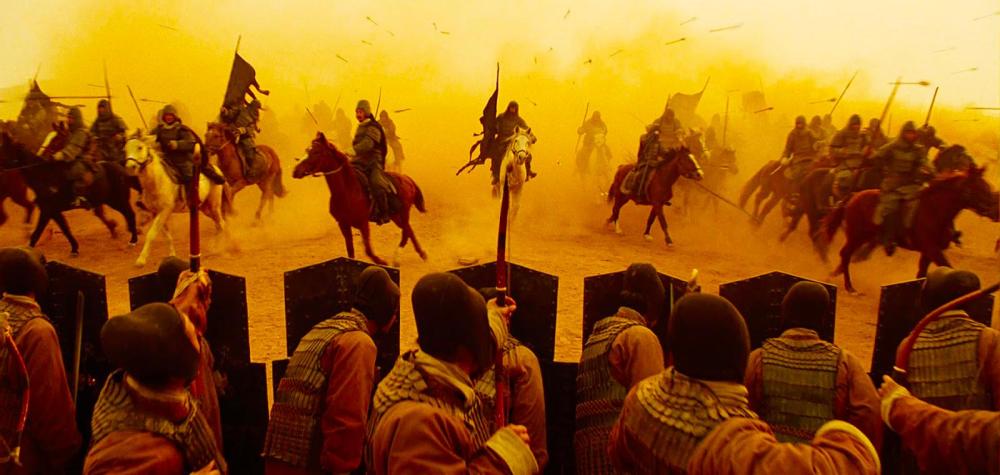
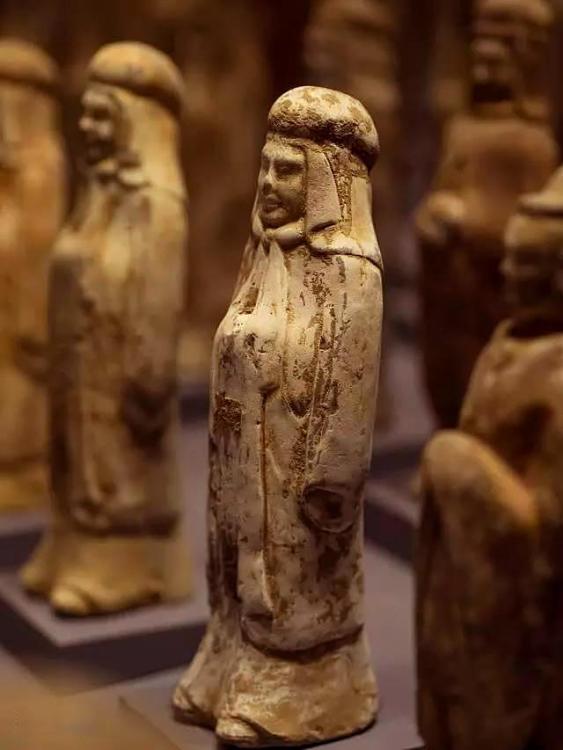
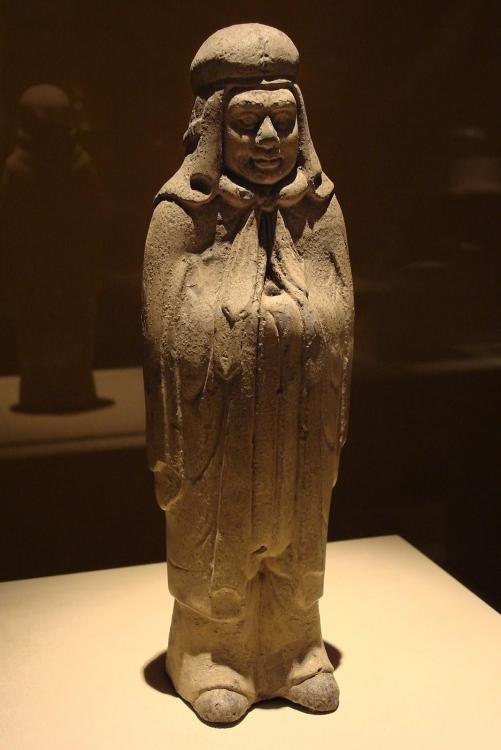
.thumb.jpg.5618d1632b00f28165d15a65a31988e7.jpg)
